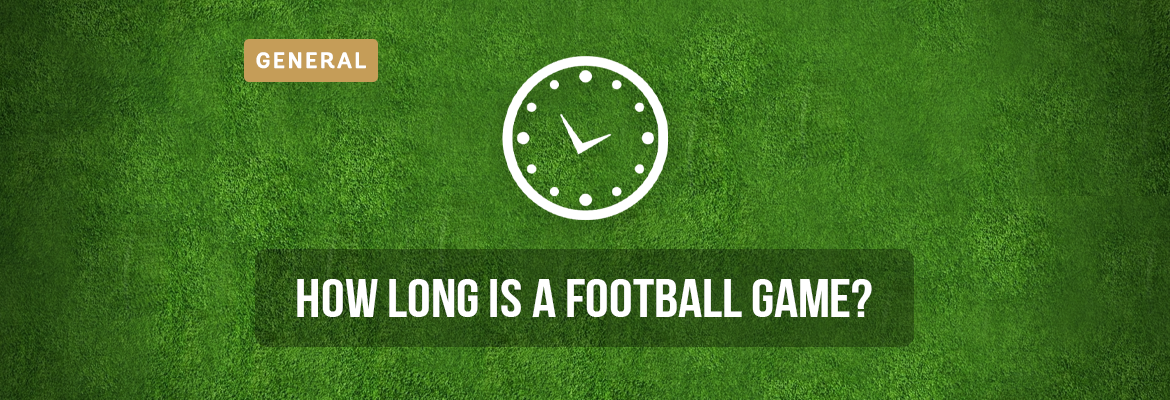
How Long is A Football Game in UK?
Although now played all over the world, modern football as it is known today is widely accepted as having its roots in the United Kingdom in the 19th century. It was here that the rules of the game were first set out including the duration of a football game.
The United Kingdom determined that the length of a football game would be 90 minutes, and, given that football is one of the UK’s most successful exports, that has been the standard which has been adopted all over the world.
To understand this better it is important to delve into the origins of the game of football.
The origins of football
Although some form of game involving a ball being kicked can be found in ancient Greece and in China in the 3rd and 2nd centuries BC, football, as it is known today, developed first in medieval England. It was a game played in fields and meadows between hundreds of people from opposing villages, men, women and children, and could last for hours. It was also extremely rough, with almost anything allowed, and could lead to local riots on occasion.
 That led to it being banned in the country for centuries until it began to be revived by the English public schools like Eton and Harrow in the early part of the 19thcentury. They began to organise games amongst themselves, but its popularity soon spread to the working classes, desperate to find a pastime which they could adopt to alleviate the strain occasioned by working conditions of the factories, mills and mines of Britain’s industrial revolution.
That led to it being banned in the country for centuries until it began to be revived by the English public schools like Eton and Harrow in the early part of the 19thcentury. They began to organise games amongst themselves, but its popularity soon spread to the working classes, desperate to find a pastime which they could adopt to alleviate the strain occasioned by working conditions of the factories, mills and mines of Britain’s industrial revolution.
At that time, each team adopted its own rules, but gradually pressure grew to adopt a uniform set of codified laws. The first to try was Cambridge University in the early 1860s and a few years later, Sheffield University amended these and introduced their own laws. Amongst their provisions was that a game should last two hours, each half lasting an hour and that each team should consist of 20 players aside. In 1868 the FA (Football Association was formed) and they amended these, reducing a football game duration to 45 minutes a half and the number of players to eleven on each team.

Does a football match always last 90 minutes?
In practice, a football match rarely lasts for 90 minutes. A referee has the option to add time on for interruptions in play such as substitutions, serious injuries or excessive goal celebrations. They also have the option to play on if they deem that one side has been deliberately time-wasting.
Even if there are no other breaks in play, if each side uses their full allocation of three substitutes each, then a minimum of three minutes is added to each game, assuming 30 seconds for a player to get off the field and be replaced by another.
Whilst it is at the referee’s discretion how much time he or she adds, to help spectators get an idea, in professional football, a fourth official will lift-up an electronic board which displays the minimum extra time that will be played.

Again this is just an indication. Matches will often last longer than the allotted additional time, particularly if an interruption to the game occurs in injury time itself.
In fact, the longest Premier League match on record to date between Arsenal and West Ham United in January 2013 lasted for 102 minutes and 58 seconds, after the match was delayed by ten minutes when West Ham substitute Daniel Potts was knocked-out.
In reality, though, even with the additional of injury time, the actual playing time in an average match is much less than that. No time is allowed for the frequent time that the ball goes out of play, for a throw-in, goal-kick or corner for example. Nor for the time taken whilst players line-up for a dead-ball situation, or for a minor foul.
Research into the top flight of German football, the Bundesliga, has shown that, even with additional time added on, the average playing time in a match is just 56 minutes and five seconds.
How Long Is half-time in Football?
Separating the two halves of a match is the half-time interval. This used to last ten minutes, but in 1995, it was extended to 15 minutes worldwide.
Extra Time after 90 minutes in Football
In knockout competitions like cup tournaments, where a winner needs to be determined, and the two sides are level after normal time, or, on aggregate, if it is a two-legged affair, it is normal to play two halves of extra time lasting 15 minutes each.
Again referees have the discretion to add additional time for injuries and other major interruptions. Theoretically, referees are meant to make teams turn straight around and play again when one half of extra time ends. However, in practice, because of player fatigue, teams are allowed a short pause to recover and to discuss tactics with their coach.
If no winner emerges after extra time, then penalties are used to decide who progresses in the competition.
Why are children’s football games shorter?
Whilst 90 minutes is the rules for all senior football, men and women’s, it is different for children and youths.
There are several reasons for this, primarily to do with the physical development and maturity of children’s bodies. Depending on age, the amount of time a child plays in a match varies, as does the number of players and the size of the pitch. The younger they are, the less they are expected to play. As they grow older and mature physically, it is judged that their bodies are able to cope with an increasing amount of work rate.
 Mini-Football: This covers children up to the age of under 10. The rules state that games should last 40 minutes, with two halves of 20 minutes each. The number of players on each side starts at five and gradually increases to seven as they get older.
Mini-Football: This covers children up to the age of under 10. The rules state that games should last 40 minutes, with two halves of 20 minutes each. The number of players on each side starts at five and gradually increases to seven as they get older.
Under 11s and under 12s: As children get physically stronger, games are increased to nine aside and the length of each half to 30 minutes.
Under 13s and under 14s: This is the point at which teams are expanded to 11 aside, and games consist of two halves of 35 minutes each.
Under 15s and under 16s: This is the final stage before reaching full maturity, and the length of games is expanded to 40 minutes each way.
Is the 90-minute match sacrosanct?
Despite 90 minutes being the standard length of a football match, at least for adults, for more than 140 years, there have been various suggestions that this might be altered. When proposals were being developed in the late 1990s and early 2000s for how the game might be popularised in the US, one suggestion that was aired was to split the game into four quarters, much like American football and baseball.
Most recently, the chairman of the PFA in England, Gordon Taylor, proposed reducing the length of games as players face increased workload having to complete seasons interrupted by the coronavirus pandemic.
None of these proposals has gained widespread support though.
Another idea which has been mooted is to reduce the length of games to 30 minutes each. This has been proposed in order to eliminate the amount of time-wasting in the game and would see the clock stopped every time that the ball went out of play. As stated earlier, with the average amount of playing time in a match only 56 minutes, this would actually increase the length of a game.
However, this idea remains at the planning stage and the current rules look set to stay in place.
For the time being, football will remain a game of two halves, and those halves will be 45 minutes long – more or less!
Conclusion
A football match time limit was set at 90 minutes in total, 45 minutes each way, by the original football lawmakers, and that is the rule that still prevails to this day. In reality, because referees have the discretion to add injury time, professional matches rarely last just 90 minutes, with three or four added on at the end.
Cup competitions are different. They can go to extra time and penalties, whilst children do not play as long because of the strain that it would place on their young bodies.
However, despite proposals at various times for alternatives, the football match time limit will remain at 90 minutes for the foreseeable future.
Football Match Length FAQs
Why is a football match 90 minutes long?
Because this is the duration of a football game that was decided by the original lawmakers of the game, the Football Association, in 1868.
How long is a football match including half-time?
A football match will last a minimum of 1 hour and 45 minutes. That is assuming 45 minutes of football each half, and a break of 15 minutes in between. In practice, it will usually last longer than that because the referee will, at their discretion, add on time for injuries, substitutions and other interruptions to play.
Is there a football match time limit?
In theory, a referee can keep playing until he or she determines that 45 minutes play in each half has been completed according to his or her watch. In reality, the average period of injury time is typically between three and five minutes, and will only usually be longer if there is a serious injury.
Are there any exceptions to this?
In cup competitions and knock-out tournaments, if the teams are level at the end of 90 minutes, a period of extra time might be played, consisting of two halves of 15 minutes each, usually with a small break in between. In the event that the scores are still level after that, penalties will be used to determine the winner.
In addition, for children and players under the age of 17, the duration of matches and halves will vary, with the prevailing rule being the younger the child, the shorter time the match.
How do you do it at Samba Soccer Schools?
At Samba Soccer Schools, we begin our training sessions with a 10 minute small-sided game for the students. This is essentially their warm-up and is also incredibly fun with samba music playing in the background. The games are usually 2v2 or 3v3, so each child can get involved and we use the smaller pop-up goals to avoid children just shooting as soon as they receive the ball.
There is an emphasis on skills and 1v1 tricks. The coaches always have 3 footballs at hand, ready to roll in if the ball goes out of play so that the intensity levels are always high.
In addition, we also end the sessions with a 10-minute game so children can apply the skills they learned throughout the class. In total, the game duration of our sessions is 20 minutes. If you want your child to experience football training the Brazilian way, then go ahead and book a free trial today.
What do you think should be the duration of a football game? Share your thoughts in the comments below!




Samba Soccer Schools
I Have a son That is